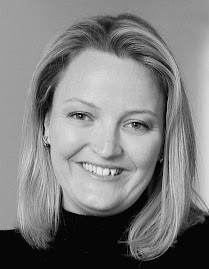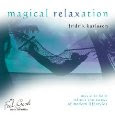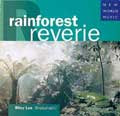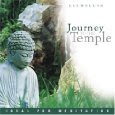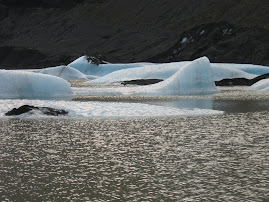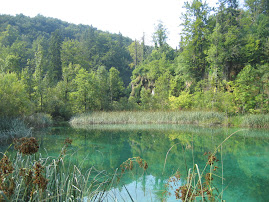I am learning a thing or two about the differences in massage qualifications between countries! It would appear that a massage therapist in Australia is required to undergo far much more study to qualify for a Diploma, than a massage therapist in the UK.
When I simultaneously completed my ITEC Diploma Course in Holistic Massage and BTEC Professional Diploma Course in Holistic Massage Practice in the UK in 2007, I was led to believe that the ITEC qualification was recognised almost globally - and certainly in Commonwealth countries such as Australia. I was aware that the higher level BTEC qualification was specific to the UK, but it gave me a deeper knowledge of massage techniques than the ITEC course would have
I thought that when I relocated back to Australia, the transfer of my qualifications would be a simple affair – have someone review and approve my UK qualifications, join the Australian Association of Massage Therapists, get insurance and get out there massaging commercially. After all, in the UK, I had been practicing commercially, was a member of the Complementary Therapists Association, and had all my insurance sorted etc.
Enter the Australian Qualification Framework (AQF) – the body that governs all accredited training courses in Australia. It’s about competencies, and any school, college, university or individual trainer who wants to offer nationally recognised courses must have their courses sanctioned under the AQF.
The Australian Association of Massage Therapists advised me to have my qualifications “RPL’d” – that is, assessed for Recognition of Prior Learning, either by a government department or one of the Australian massage schools. I chose to contact Massage Schools of Queensland and have them RPL my qualifications – I figured they would have far more of a clue about massage skills than a government department who simply mapped units of competency from the UK qualifications to the Australian framework.
Rhona, the owner of Massage Schools of Queensland was very helpful. When I was still in the UK, she asked me to send hard copies of my qualifications, detailed course syllabi and any supporting material about what my courses had included. That was all straightforward enough.
The next step was a face-to-face meeting, which I had earlier this week. We discussed my course in depth. The studies around anatomy and physiology, massage therapy practice and the clinical aspects of massage practice all seemed to map fairly consistently. Massage technique was another story however.
T o gain the minimum qualification in massage in Australia (the Certificate IV in Massage Therapy Practice), students have to complete practical units in Swedish massage, deep tissue massage, aromatherapy and reflexology. I don’t object to the fact that the Australian qualification requires students to study more modalities – in fact, I think that the more techniques a therapist can apply, the more effective treatment they can provide their clients.
In terms of the mapping to the UK qualification, my Swedish and deep tissue massage units were adequate. They had been the focus of my course. I had separately done a further, substantial qualification in seated/acupressure massage with TouchPro UK, and Rhona agreed that this could be substituted for either the aromatherapy or reflexology units. In the RPL process, “equivalent units” can also be counted – so the assessor will look to see how many hours the unit took to complete and determine whether it can be counted as an equivalent unit.
That still left me one unit short, and Rhona advised that I would need to do either the aromatherapy or reflexology modules before she could award me the Cert IV in Massage Therapy Practice.
I had previously investigated both modalities, and had intended to do some post-grad studies once life after my relocation was a bit more organised, and after I had practiced massage commercially more in Australia. When it became a matter of “you need to do another unit before you can qualify”, I decided to start a reflexology unit in July. I will most likely do the aromatherapy unit this year as well.
Once I’ve done the month’s worth of reflexology studies, I will gain my Cert IV, can join the association, get insurance, and start massaging. Who knows – I’ll probably go on to do the Diploma in Remedial Massage!
I’m all for further study, and I completely agree with the requirement for massage therapists and other holistic therapy professionals to continuously upgrade their skills - but I do object to the hoops (and additional cost!) that you have to go through to transfer qualifications between countries.
Anyway, I’m really looking forward to meeting my reflexology study buddies, and looking forward to being able to do a reflexology treatment by the end of July.
Saturday, June 21, 2008
Mapping massage qualifications across countries – not as straightforward as you would think!
Saturday, June 7, 2008
Shiatsu massage saves the long haul flight!
If you've ever flown across the world, you'll know how grim you feel after the first 10 or 12 hour leg from Europe to some point in Asia, and the unbridled joy of then having to fold yourself back into a cramped economy seat and endure another 8 or 9 hours. Ugh...travelling is awesome but long haul flights are horrendous.
I had a two-hour stop over in Singapore on my way from London last week, and for the first time ever, decide to have a massage in the spa at Changi Airport.
Rainforest by SATS is a nice little oasis in the middle of one of my favourite airports in the world. Indeed, Changi Airport is frequently voted as the airport people would most prefer to be stuck in for 24 hours. It's clean, efficient and full of great shops.
For a minimal fee you can use the spa's shower facilities, and they offer a range of massage and beauty services.
I had never had a shiatsu massage before, and opted for the 1-hour full body massage - any excuse to spend as much time horizontal in the middle of my long journey home!
Shiatsu originated in Japan, and uses predominantly the fingers and palms of the hand to apply pressure to the body. It also works on clearing blocks in the meridians, or energy lines that run all over the body. The seated massage course I did with Touchpro UK works on the principles of shiatsu, and acupressure points.
My therapist, Angie, showed me to the treatment room. There were three couches in the room, and two people were already in the process of their massage.
Shiatsu massage is typically done on clothed clients, on a standard massage table or the floor. It seemed to be a really versatile form of massage - perfect for an airport spa enviroment, because there were no oils involved. I don't think I'd have liked an oil massage before climbing back onto the jumbo tin can.
The massage techniques were firm and brisk - it always amazes me how petite women like Angie can apply so much pressure.
I recognised some of the techniques Angie was applying, from what I'd learnt in my various courses. There were certainly a lot of circular frictions around the knots in my shoulders, which creaked and crunched away. I could feel Angie's elbow at work too - using the point of the elbow to get into tight muscles saves the therapists hands, and you can get extra leverage and pressure by bending the elbow. Fwaw...this was the perfect antidote for long haul flights.
The massage was comprehensive, including my head and feet. I find I tend to curl my feet into weird positions in the plane, so it was great to have them straightened out.
Angie and I chatted about massage, and different techniques. She'd been doing shiatsu for years.
When the massage finished, I felt revived and more alert than I had when I came in. I will definitely opt for a massage to break up future long haul flights.
